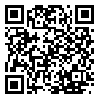Volume 15, Issue 3 (October 2008)
J Birjand Univ Med Sci. 2008, 15(3): 69-72 |
Back to browse issues page
1- Assistant Professor, Department of Dermatology, Faculty of Medicine, Birjand University of Medical Sciences. Birjand, Iran , esmatshaban@bums.ac.ir
Abstract: (62665 Views)
Background and Aim: Vitiligo is an acquired depigmentation disorder that is recognized by loss of melanocytes in epidermis, mucosal surfaces and other body tissues. Vitiligo might be an autoimmune disorder with anti-melanocytic antibodies. This study aimed at determining demographic characteristics of vitiligo cases referring to dermatology clinic of Vali-e-Asr educational hospital in Birjand. Materials and Methods: In this descriptive study 300 patients with clinical diagnosis of vitiligo who had referred to the dermatology clinic of Vali-e-Asr hospital between 2002 and 2007 were evaluated with regard to characteristics such as age, sex, familial history, sites of lesions, form of involvement and some of its associated diseases such as halonodus, alopecia areata and hair involvement (leukotrichia). Results: Out of 300 patients analyzed, most were females. 23.6% had positive familial history. Most sites of lesions were limbs and face and the most common form was generalized involvement. In association with vitiligo, halonadus in 6.6% alopecia areata in 1.33% and hair involvement in 11% were observed. Conclusion: Considering that the majority of cases were females and the fact that the external areas of the body such as hands, feet, and face were the mostly involved sites studying the genesis of the disorder, development and distribution of it seems important so that by decreasing the number of cases and prescribing an effective treatment the emotional, psychological and social complications of the disease would eventually decrease.
Type of Study: Original Article |
Subject:
Dermatology
Received: 2009/02/17 | Accepted: 2016/03/10 | ePublished: 2016/03/10
Received: 2009/02/17 | Accepted: 2016/03/10 | ePublished: 2016/03/10
| Rights and permissions | |
 |
This work is licensed under a Creative Commons Attribution-NonCommercial 4.0 International License. |


